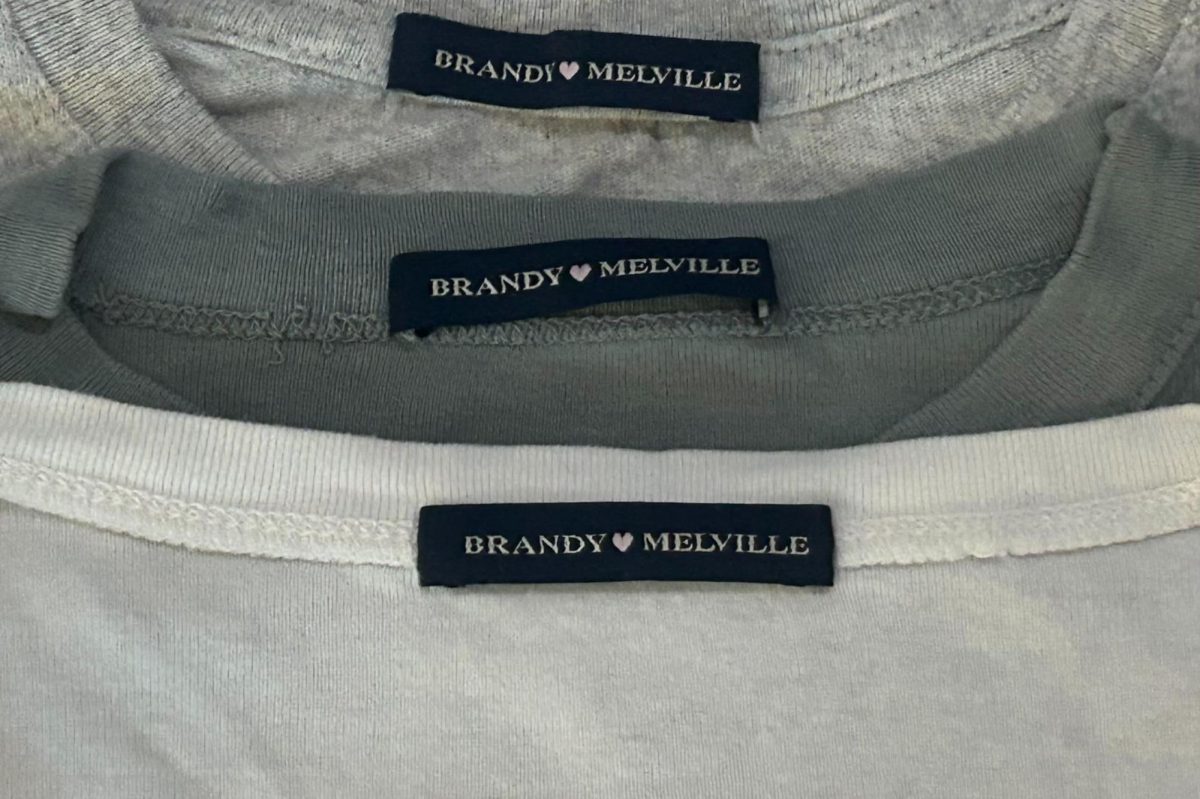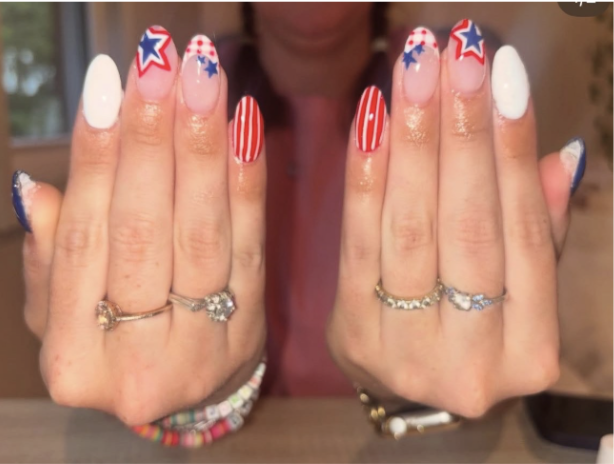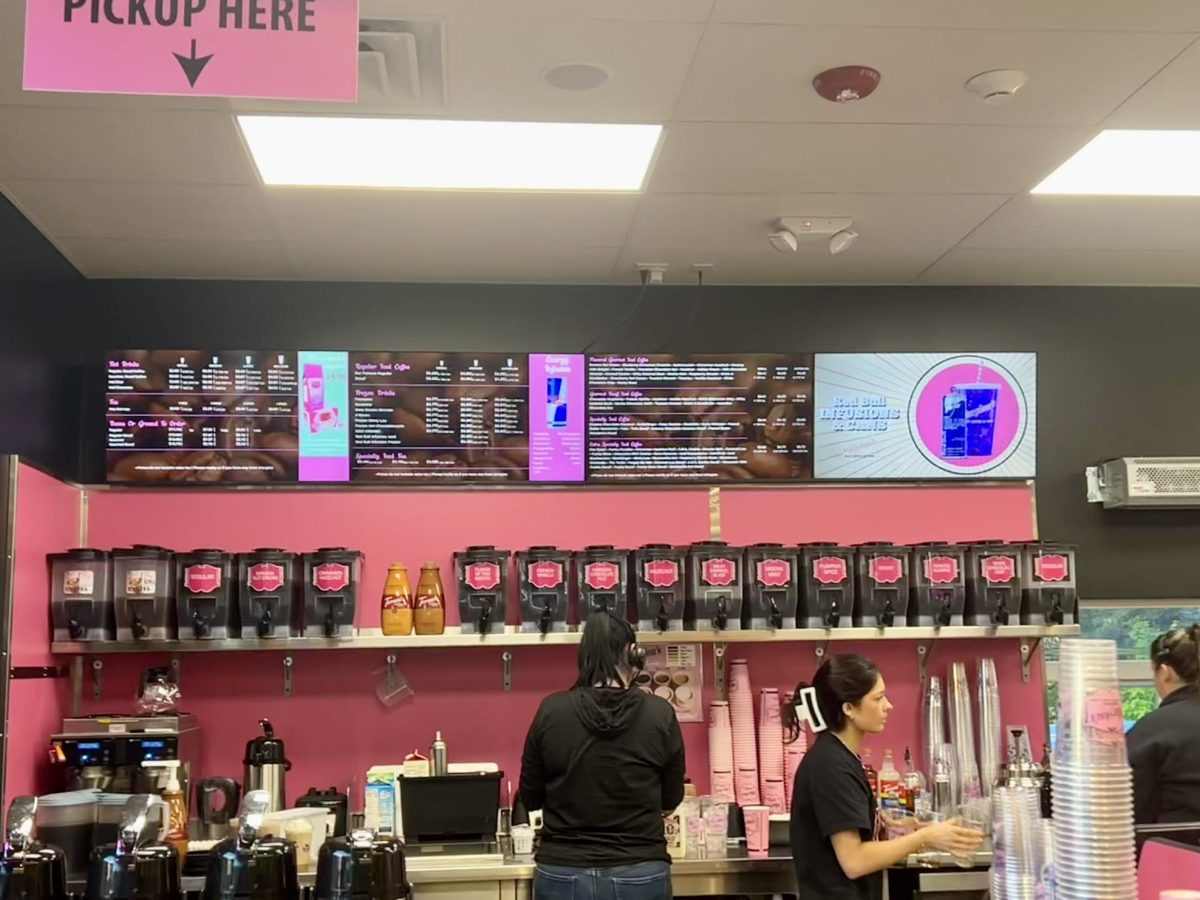Ever since the 19th century, nicotine products, beginning with cigarettes, have painted the picture of a certain lifestyle. Not only were cigarettes rising to the top culturally, but they were also advertised as safe and healthy and were even recommended by physicians. Shortly after they hit the market, this myth was debunked and cigarettes were proven to be linked to cancer. Then, in the early 2000s, the use of rechargeable and disposable electronic nicotine vaporizers (vapes) surged, as some thought it to be the healthier alternative to cigarettes.
Vaping, especially among high school aged teens, saw a peak in popularity starting in the late 2010, reaching its pinnacle in 2019 when more than a quarter of high school students were using nicotine vapes. The rapid increase in teen use of e-cigarettes led to the issue being officially declared an epidemic by the U.S. Surgeon General at the time, Vice Admiral Jarome Adams. After more research was done, chemicals in vapes, such as formaldehyde, were proven to cause lung and cardiovascular diseases. Now the trend has changed once again with modernized tobacco free nicotine pouches, with the most popular brands being ZYN, Rogue and VELO, among many others.
While cigarettes were recognized to cause cancer and other diseases by the U.S. Surgeon General in 1964, dangers of other smokeless tobacco products were not revealed by the U.S. Surgeon General until 1986. However, when tobacco free nicotine pouches became a more popular option, many people, especially high schoolers who were addicted to vaping, took it as their opportunity to quit.
Nicotine pouches, being small pouches which get placed inside the upper or lower lip and rest on the gums, are very small and discreet, allowing anyone to use them at any time without others around them noticing. The ability to use pouches inconspicuously is one of their main attractions.
The pouches are both small in size and do not require one to spit like a tobacco pouch would. Nicotine pouches frequently contain significantly higher levels of nicotine than a vape would, causing the user to become more addicted.
While the effects of smoking are frequently taught in schools and easily found on the internet, due to the novelty of nicotine pouches, information on the harm they can cause is less accessible. Usually, nicotine pouches come in 3 milligram or 6 milligram doses, while the nicotine in 10 milligram pouches would equal about 1.5 packs of cigarettes or 1.5 e-cigarette pods of 2% vape juice per day. Considering the average user consumption is around half a can or 8-12 pouches per day, the statistics add up to be dangerous. Side effects of nicotine pouches include gum irritation, sore mouth, hiccups, nausea, dizziness, nicotine addiction and more.
“The pouches can cause skin problems and skin cancer,” school nurse Tim Bryant said. “They are even more serious because throat cancer and oral pharynx cancer are very serious and very prevalent.”
Furthermore, nicotine usage can severely impact cognitive health, damaging brain development and function during adolescent years. This can potentially impact school, mental health, the ability to form relationships and navigating addiction.
“The marketing claims [nicotine pouches] to be a healthier option to smoking or vaping, leading to a false sense of safety with use,” Director of Wayland Youth and Family Services J Verhoosky said.
If nicotine pouches are nearly as unhealthy as risky as vaping, then why are they on the rise? Social media influencers FreezerTarps and Daddy Wellness, political commentator Tucker Carlson and quarterback Baker Mayfield, among many others, have all publicly used or promoted the product. The audiences of these celebrities are predominantly teenage to young adult males, creating an association between the products and certain sports, groups or general masculinity.
“In the sport I play, using nicotine is very common, it is matter-of-factly just part of the culture,” an anonymous WHS student, who was formerly addicted to nicotine and used ZYNs, said. “I was exposed to ZYNs almost every day for two years before I started using them. Eventually it became so normalized and I got curious enough that I started using them.”
While identity can play a part in the exposure to nicotine usage, social media specifically targets groups using specific algorithms. While the brand ZYN doesn’t directly use influencers to advertise their product, recent popularity of ZYNs has risen due to people called “Zynfluencers.” Zynfluencers are people who post on social media documenting their use of nicotine pouches. Many of them use nicotine pouches daily, putting one in before work, school, the gym or any activity.
“I would see videos [on social media] talking about both ZYNs and nicotine in general,” the anonymous student said. “It’s definitely prevalent, but I never felt any pressure from influencers or my friends trying to force me to use nicotine. Someone would occasionally ask if I wanted [a nicotine pouch] or if I wanted to hit their vape, but when I said no that was the end of the discussion, I never felt like I was forced to use it.”
The trend began to spread and the percentage of youth engagement with ZYNs failed to impede. On April 4, 2024, the FDA announced issues of 119 warning letters and 41 filed complaints of civil money penalty against numerous retailers selling flavored ZYN nicotine pouches. While the variety of flavors that range from mint to grape are a major concern due to their appeal to curious teens, the FDA was more closely apprehensive of the crucial role social media influencers were playing in the popularity of nicotine pouch usage.
In the next couple of years, the usage of nicotine pouches is expected only to go up following recent patterns. Data following the shipments of ZYNs in the U.S. dating all the way back to 2017 shows that over six years, ZYN shipments in the U.S. have increased from 1 million to 334 million cans.
“Most teenagers don’t look past two or three years down the road,” Bryant said. “You’re invincible right now, nothing can hurt you. But any kind of delay of health issues like eating wrong, doing drugs, any kind of nicotine use, smoking, [isn’t] looked upon [as something that] will hurt now, but two, three or four years down the line [the effects] come out.”
For those addicted to nicotine, usage can take place anywhere, including school. After failures of multiple schools‘ attempts to stop vaping, many people are calling on schools to play a more significant role in condemning this new era of nicotine use.
“[I would like to see] continued dedication to nicotine and general substance use education,” Verhoosky said. “[Such as] continuing to have a clear policy regarding student use of nicotine, clearly posted ramifications regarding use and possession on school property and open door policies for students struggling with dependency to seek help and or treatment options.”
At WHS, students are given opportunities to learn more about nicotine and how to positively contribute to the cause. Mandatory classes in the wellness program ensure a baseline understanding for all WHS students of nicotine. Also, student groups like Students Against Destructive Decisions or o WaylandCares andWayland Youth & Family Services are resources that can offer advice and plans of action to support students who may be struggling with nicotine addiction.
“It is important to seek accurate information and to normalize conversations around addiction, substance use, recovery and support,” Verhoosky said.
Furthemore, federally funded programs such as The Real Cost and the Massachusetts Tobacco Cessation and Prevention Program offer support and information to those struggling with addiction. These programs work specifically to target teens using advertisements on social media and the internet to try to bring down the popularity of vaping and all nicotine usage.
While many people presumed Gen-Z might be the first generation to end the trend of smoking, this conviction has proven itself unlikely. Although the trend seems to be predominant in male teenage athletes, anyone is vulnerable to the risks of nicotine usage.
“I feel as if Wayland Schools [are] doing wonderfully to address this topic and continue their dedication to both the physical and mental health of students,” Verhoosky said.





























